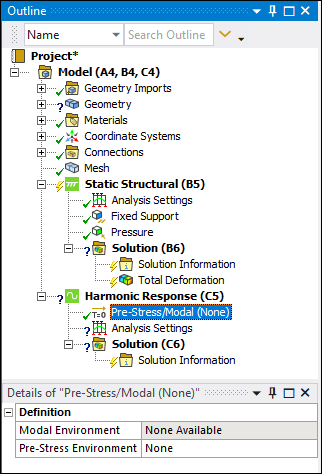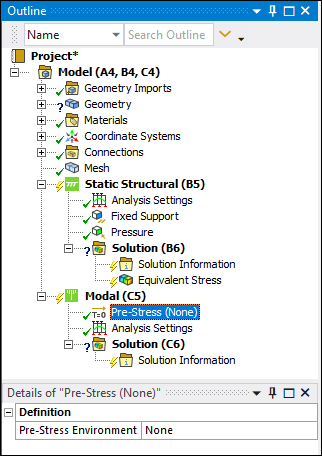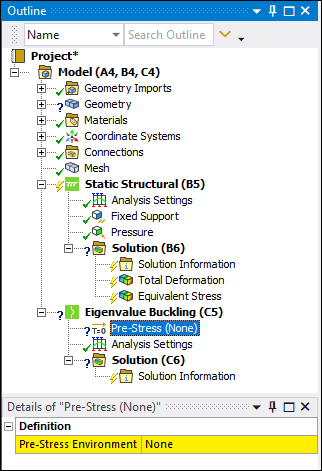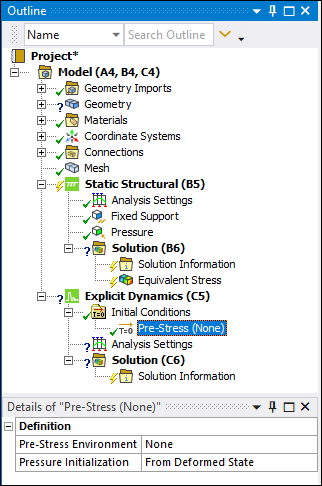Defines an upstream structural analysis whose stress results are to be used in a Prestressed Coupled Field Harmonic Analysis, Prestressed Coupled Field Modal Analysis, Harmonic Acoustics Analysis, Harmonic Response Analysis, Modal Analysis, or Modal Acoustics Analysis, whose stress-stiffening effects are to be used in a Eigenvalue Buckling Analysis, or whose stresses, strains, and/or displacements, or velocities are to be used in an Explicit Dynamics Analysis.
| Pre-Stress Object for Harmonic Response

| |
| Pre-Stress Object for Modal

| |
| Pre-Stress Object for Eigenvalue Buckling

| |
| Pre-Stress Object for Explicit Dynamics

|
Object Properties
The Details Pane for this object includes the following properties.
| Category | Properties/Options/Descriptions | ||||||||||||
|---|---|---|---|---|---|---|---|---|---|---|---|---|---|
| Definition |
Pre-Stress Environment: Using this property, you specify the upstream structural analysis you wish to link to the current analysis. The application uses the stress results from the specified structural analysis in the current analysis.
|
Tree Dependencies
The Pre-Stress object has the following Outline structure.
Valid Parent Tree Objects: Coupled Field Harmonic, Coupled Field Modal, Harmonic Acoustics, Harmonic Response, Modal, Modal Acoustics, Eigenvalue Buckling, Explicit Dynamics, or Substructure Generation environment object.
Insertion Methods
The object appears automatically for Coupled Field Harmonic, Coupled Field Modal, Harmonic Acoustics, Modal Acoustics, Harmonic Response, Modal, Eigenvalue Buckling, Explicit Dynamics, and Substructure Generation analyses.
API Reference
See the Initial Condition section of the ACT API Reference Guide for specific scripting information.
Additional Related Information
See the following sections for additional information:


